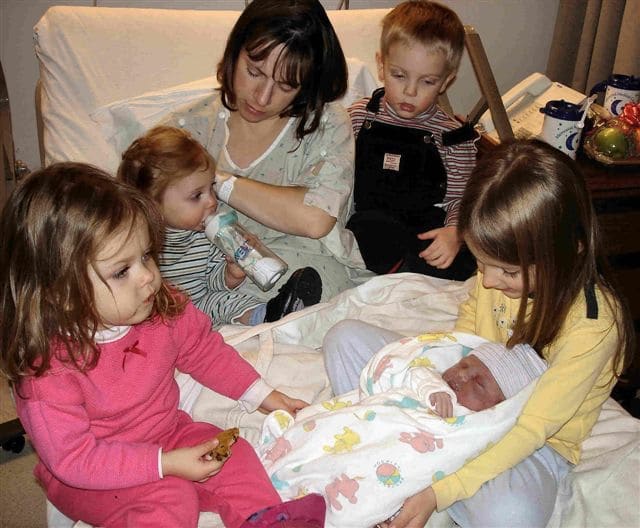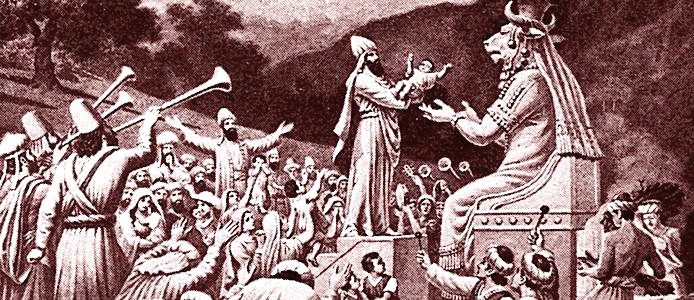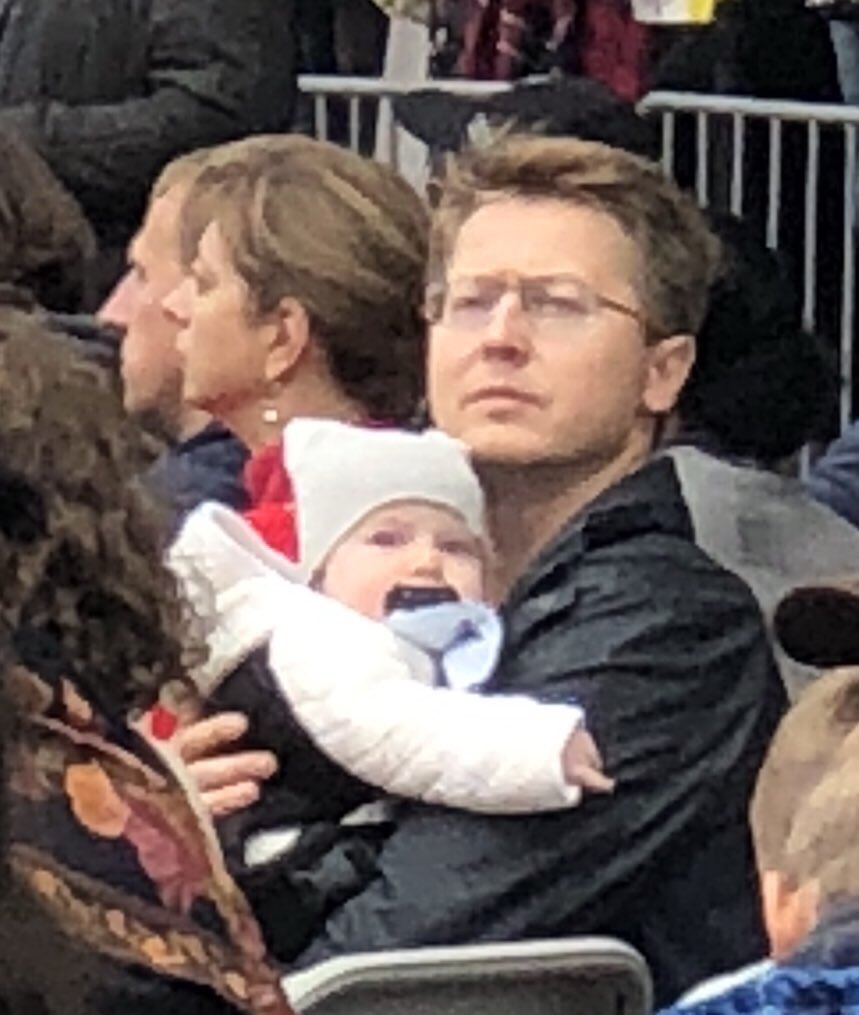Reprinted with permission of Human Life International, www.hli.org.
***
Life and Death – A Different Worldview
Two Diametrically Opposed Visions
In a lyrical essay originally published in Crisis Magazine, Catholic philosopher and Senior Fellow of Human Life International, Donald DeMarco, Ph.D., poignantly paints the stark division between the pro-life worldview, and the worldview espoused by the Culture of Death. Invoking T.S. Eliot’s seminal poem The Waste Land, Dr. DeMarco suggests that Eliot captured the essential characteristics of the Culture of Death.
In such a culture, death is presumed to have the final say, and as such is the measure of all things: life leads to death, and then no more. Given this, life is suffused with a sense of bleak hopelessness, a “tale told by an idiot…etc.” Children – the most tangible sign of a society’s hope for and investment in the future – are a thing to be prevented through contraception, sexuality is reduced to the tawdry and transactional, suicide ever lurks on the peripheries, and beauty and fertility appear as things painful and threatening (“April is the cruellest month.”).

Against this bleak pessimism, Dr. DeMarco sets up the testimony of an array of poets who saw beneath even the worst of life’s struggles and sorrows a rich ore of beauty and meaning, and who celebrated life. Often inspired by the Christian gospel, they presumed that resurrection, and not death, is reality’s final word, and that the apparent tragedy of death is but a preparation for resurrection. Death’s finality is only an apparent finality. “Life is real! Life is earnest! And the grave is not the goal,” exclaimed Longfellow.
“The label ‘pro-life’ hardly begins to do justice to the rich poetic expressions of life,” concluded Dr. DeMarco. “Yet ‘the fine art of Life,’ as the contemporary poet, Edwin Leibreed has said, ‘is to make another Soul vibrate with a song of joy.’ God is the author and paragon of life, which, in its pilgrim form, becomes a challenge, an adventure, a sublime and luminous possession, a great gift, an inexhaustible treasure, and the way to heaven. We should live out our lives with the full understanding of how infinitely valuable life is.”
The Richness of the Term “Pro-Life”
I admit that such speculations can seem somewhat far removed from the pragmatic political purpose that the label “pro-life” was designed to serve. I am sympathetic to the argument that we ought not excessively to broaden the meaning of the term “pro-life,” so that it no longer immediately testifies to our opposition to the deliberate slaughter of unborn children. There is a risk that by meaning everything, the term “pro-life” will come to mean nothing. And indeed, we have seen some in the “liberal” wing of the Church attempt to co-opt the term to serve their own questionable political purposes.
On the other hand, the pro-life movement and its founders and shapers selected the term “pro-life” in part precisely because they recognized that the battle against baby-killing is not just a battle against this one particular form of evil, but against a whole worldview – a worldview that, in some real way, favors and celebrates death. I am not one of those who necessarily gets offended if someone refers to me as an “anti-abortion activist.” I most certainly am someone who is against abortion, and there is nothing shameful about that. Indeed, it is a badge of honor. On the other hand, I do lay claim to the admittedly more imprecise “pro-life” label, precisely because my opposition to abortion is an expression of a more comprehensive worldview that not only precludes the killing of innocent unborn babies, but also rejects the spiritual and psychological root causes that would lead anyone to desire to kill innocent unborn babies in the first place!
More than anyone else, St. Pope John Paul II pointed towards the common thread uniting the abortion holocaust to other forms of evil in our modern world, including not just the direct attacks on life itself, but attacks against the moral truths and societal structures designed to protect life: above all the moral truths pertaining to sexuality, and the structure of the family. The abortion holocaust is only one manifestation of this Culture of Death. The Culture of Life, on the other hand, is one in which the absence of abortion is merely the natural outflowing of a radically life-affirming worldview.
If Dr. DeMarco’s description of the pro-life worldview seemed excessively poetic, consider this alternately gorgeous and chilling passage from St. Pope John Paul II’s homily on the Solemnity of the Assumption of the Blessed Virgin Mary in 1993:
This marvelous world – so loved by the Father that he sent his only Son for its salvation (Cfr. Io 3,17) – is the theater of a never-ending battle being waged for our dignity and identity as free, spiritual beings. This struggle parallels the apocalyptic combat described in the First Reading of this Mass. Death battles against Life: a “culture of death” seeks to impose itself on our desire to live, and live to the full. There are those who reject the light of life, preferring “the fruitless works of darkness” (Eph 5,11). Their harvest is injustice, discrimination, exploitation, deceit, violence. In every age, a measure of their apparent success is the death of the Innocents. In our own century, as at no other time in history, the “culture of death” has assumed a social and institutional form of legality to justify the most horrible crimes against humanity: genocide, “final solutions”, “ethnic cleansings”, and the massive “taking of lives of human beings even before they are born, or before they reach the natural point of death.”

The sainted pope took the same approach in his deservedly famous pro-life encyclical Evangelium Vitae. That incisive exploration of the cultures of life and death is framed within an initial discussion of the profound value and dignity and destiny of human life. Compared with the subsequent ethical analyses of specific moral acts such as abortion, euthanasia, artificial reproductive techniques, etc., this discussion may seem excessively abstract. But St. Pope John Paul II knew that just as laws are downstream from culture, so is culture downstream from theology. A Culture of Life cannot and will not begin merely with the correct laws, as important as they are. It can only flow out from the correct theological and metaphysical principles: our concepts of God and man.
“Man is called to a fullness of life which far exceeds the dimensions of his earthly existence,” he writes at the beginning of Evangelium Vitae, “because it consists in sharing the very life of God.”
The loftiness of this supernatural vocation reveals the greatness and the inestimable value of human life even in its temporal phase. Life in time, in fact, is the fundamental condition, the initial stage and an integral part of the entire unified process of human existence. It is a process which, unexpectedly and undeservedly, is enlightened by the promise and renewed by the gift of divine life, which will reach its full realization in eternity (cf. 1 Jn 3:1-2). At the same time, it is precisely this supernatural calling which highlights the relative character of each individual’s earthly life. After all, life on earth is not an “ultimate” but a “penultimate” reality; even so, it remains a sacred reality entrusted to us, to be preserved with a sense of responsibility and brought to perfection in love and in the gift of ourselves to God and to our brothers and sisters.
The Bleak Culture of Death
How vastly different is this transcendent optimism from the bleak pessimism of various popular philosophies that have so enamoured and ensnared so many minds in the past century: the nihilism that proclaimed that God is dead and that life holds no meaning; the existentialism that proclaimed that meaning is something that humans futilely wrest from a fundamentally “absurd” universe; the communism that eschewed hope in a transcendental paradise and that murdered over a hundred million people in the name of creating an earthly one; the fascism that proclaimed the value of the master race and the worthlessness of all others; the eugenics that proclaimed the dominance of the “fit” and the worthlessness of the “unfit.” And on and on.
Our own age is still haunted by the spectres of each of these hopeless ideologies, and many others created since. Indeed, one is astonished, at times, at the extent to which simple, wholesome, fruitful, productive, happy normalcy is looked down upon and scorned as “old-fashioned” and unsophisticated, while all manner of hopelessness, sterility, deviancy, and bleakness are openly celebrated as the only “sophisticated” and praise-worthy things.
I think it safe to say that we saw this dynamic played out in the recent election. There are, no doubt, many things that one could criticize about the Republican Party as it exists today. And yet, it is difficult to wrap one’s head around the furious apostolic zeal with which the Democratic party systematically advocates things destructive, evil, and hopeless. Whatever one thinks of the national spectacle that was the nomination hearings of Supreme Court Justice Brett Kavanaugh, for instance, there is no doubt in my mind that a great deal of the irrational hysteria manifested in much of the media coverage and in public protests was directly traceable to one issue: abortion. The Democratic Party has openly and explicitly committed itself to defending the right to kill – murder – unborn babies in just about any imaginable circumstance and for just about any reason. With the nomination of Kavanaugh, Democrats were petrified that their fabricated Constitutional “right” to abortion would be taken from them, and no measures were too extreme to prevent that from happening.
Recently the Trump administration reported its intent to return to the scientific, text-book definition of “sex” – contrary to the Obama administration’s novel use of an entirely subjective definition – was greeted with outrageous claims that Trump was “erasing” the existence of transgender people. This was only the most recent indicating that the Democratic party has wholly allied itself with an extremist, tyrannical and tawdry conception of LGBT ideology and sexual ethics, in which objective scientific truth is subordinated to subjective feelings; in which no age is too young to introduce children to gross sexual immorality (i.e. drag queens reading to children at public libraries); in which the nuclear family is perceived as an oppressive and outmoded institution to be replaced with fluid “open” and “polyamorous” unions; in which vast public spectacles are devoted to celebrating anonymous, unnatural, sterile, promiscuous sex; in which the quiet pleasures of true romance and life-long commitment are subordinated to the unmitigated, hedonic search for pleasure; and in which even gentle expressions of conscientious opposition are to be subject to crushing retribution.
We are told that all these things are to be accepted in the name of “tolerance” and “love” and “freedom.” But in truth, one finds little of any of these among their advocates. On the other hand, when I attend pro-life events such as the “March for Life” in Washington, D.C., I always find a super-abundance of all three. Rather than the vulgar outrage that characterizes so many pro-abortion events, at the March for Life one finds a hopeful, joyful optimism. There are families. There are children. There is an abundance of common decency. And this is because most pro-life activists are not merely against abortion, but because their opposition to abortion is the natural outflowing of a wholly different worldview. Even if they do not realize it, they are giving voice to a fundamental metaphysical conviction that life is stronger than death, and not the other way around. Death is not the bleak conclusion of all things, but rather the prelude to resurrection.

To be pro-life then, most certainly involves conscientious, explicit activism targeted at ending abortion, and all other systematic attacks on human life in our society. However, it also involves witnessing to what St. Pope John Paul II called the Gospel of Life, without which our pro-life efforts are doomed to long-term failure. In addition to pro-life activism, the lay faithful are called to deeply culturally transformative activities such as building a community of loving families, providing an authentic Christian presence in the world rooted in prayer and contemplation, charitable service and evangelization, artistic and liturgical renewal, etc.
The laity’s life is called to integrate all activities into one meaningful whole – to give witness in the ordinary of one’s day in an extraordinary manner. The Culture of Death feeds off an anti-Gospel. The only truly long-lasting antidote to this anti-Gospel is the true Gospel, and the instantiation of that Gospel as a lived reality in our daily lives, by which the culture is transformed from a Culture of Death to a Culture of Life from the very roots up.



